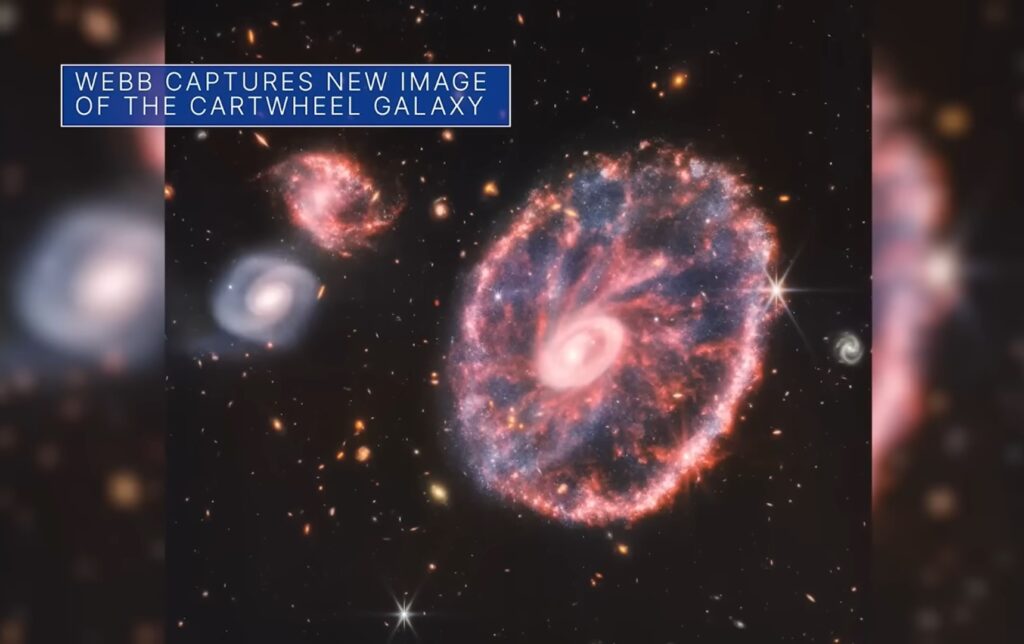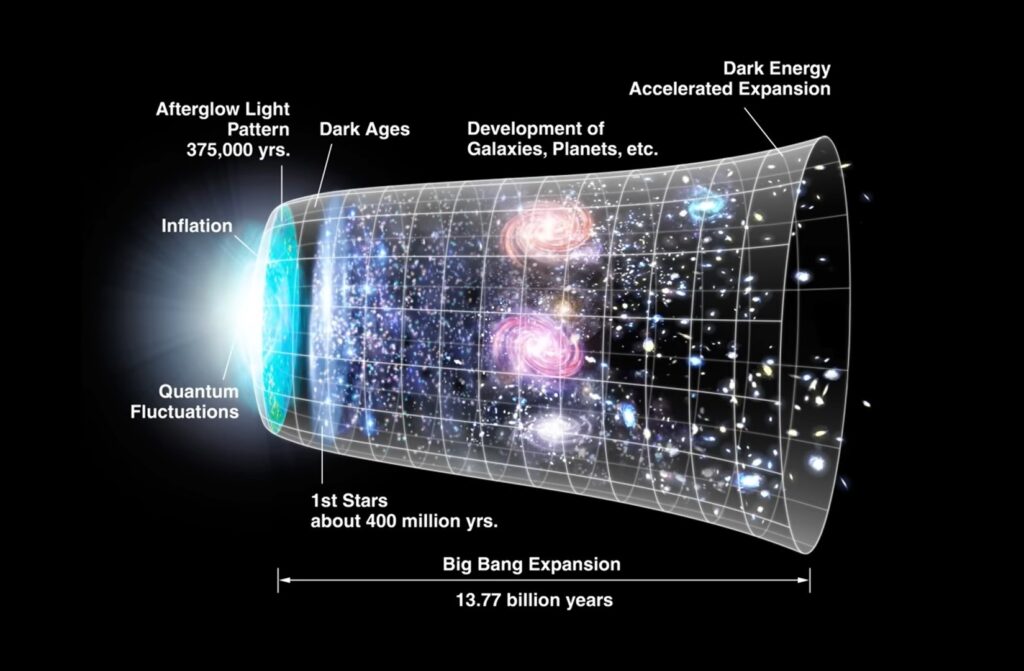If you are looking for the is the big bang theory wrong. You are in the right place. Hey everyone, and welcome to Knowledge World. Today, we will learn reasons why the Big Bang theory is wrong.
Despite major scientific discoveries that provide long support for The Big Bang Theory. There’s been a viral paper spreading over the Internet lately. Which says that the James Webb Telescope has refuted the theory.

This has led to many to think that our understanding of the Big Bang may be wrong. Could this really be the case? Is the James Webb Telescope rewriting fundamental theories of the cosmos?
One of the things the web can do is it can because of its sensitivity to longer wavelengths. It can see the light that’s traveled across the universe for longer and therefore you can see further back in time. I mean I should say it’s it will acquire lots of data. It’s got many missions and they’re all interesting one of them is to observe the formation of the first stars and galaxies, which is a tremendous problem.

We don’t really know the pair with the first stars in Galaxy spawned. We don’t really know how those enormous black holes the one in there’s a guy’s got M87 about 55 million light years away. Which has got a black hole 6 billion times the mass of the Sun in it. 6 billion times the mass of the Sun. How did that get there?
According to Brian Cox, regardless of what you may have read or heard the Big Bang is supported by a preponderance of evidence. That has become the most successful Theory ever, put forth for the origin and evolution of the universe.

In terms of the Big Bang, we very strongly suspect that that was an event in a pre-existing universe. We think that space and time existed before that and the universe was probably cold and expanding very fast and that expansion slowed down and the slowing down of the expansion is what we call the big bank. That’s called inflation. That’s the best the best theory of what happened before the Big Bang. But what started inflation off. We don’t have the knowledge. We just don’t know.
The Big Bang Theory was conceived nearly a century ago. By following the evidence that the universe is expanding. Working out what this might logically mean and then testing it on predictions such as the existence of the cosmic microwave background radiation. There’s been a viral paper spreading over the Internet, which says that our understanding of the Big Bang may be wrong. According to Brian Cox, such a claim is ridiculous. We can actually see the Afterglow of the Big Bang.
You cannot claim that there wasn’t a big bang. You can pretty much see we can see the Afterglow of the Big Bang. It’s called Cosmic microwave background radiation. It was discovered in the 1960s. It is the Afterglow of the Big Bang. You could ask the question well how far away do you have to look to see the origin of the universe.

One of the common misconceptions about the Big Bang model is that it fully explains the origin of the universe. Big Bang is a really misleading name for the expanding universe that we see. Because we see an infinite universe expanding into itself.
The universe is accelerating in its expansion. Which is a great mystery. We thought well gravity is always attractive and it should be we’ve got all these galaxies in the universe and the universe has been expanding since the big bang and it should at least be slowing down. There’s even a question. As is there enough matter in it to slow it down so much that it stops and recollapses again. At the universe is accelerating in its expansion and it will continue to accelerate unless some new physics appears that we don’t understand and it will just continue to expand forever.
This has led many to wonder whether the James Webb Space Telescope could answer one of the most fundamental questions we ask ourselves. Where did the universe come from? The James Webb Telescope has many missions. Its ability to image infrared has made it a perfect facility to observe the first stars and galaxies form shortly after the universe began.


When you look at where the galaxies are. Then they’re random in a sense but there’s also some pattern to them and in particular, they tend to roughly speaking lie on circles in the sky. They’re not completely randomly distributed. We can trace that all the way back to patterns that we see in the oldest light in the universe. Which is the light that if we look as far as we can out into space? Then we’re looking back in time.
We can look so far out into space that we can see the light from just after the Big Bang about 380 000 years after the Big Bang actually. In that light, before there were stars and galaxies there are also patterns. Which are patterns that match on to the way the galaxies are distributed in the sky today. Where did those patterns come from? The best theory we have is inflation, which says that before the Big Bang in the sense that before the universe was very hot and very dense.
It was still there and it was kind of cold and empty. But expanding very fast and then that very fast stretch of the universe came to an end. Slowed down and in the slowing down the universe got heated up and all the particles out of which the stars and galaxies are made were created. There’s good evidence for that.
The Big Bang model does not describe our energy time and space were caused. But rather it describes the emergence of the present Universe from an ultra-dense and high-temperature initial state. The James Webb Telescope provides an intriguing look at the early Universe. It has been conducting science operations for a few months now.
It has already made some intriguing discoveries, including the detection of what could be some of the earliest galaxies ever seen, that existed just 200 million years after the big bang. The James Webb Space Telescope never disproved the Big Bang. Webb’s observations are actually supporting the Big Bang model. Showing that the first galaxies were smaller and grew larger over time. Just as the Big Bang cosmology predicts.

This is a really simple observation you could you can almost do it yourself actually. You can with a bit of quite an Advanced amateur astronomy kit but not a big professional telescope you can do this. What you do, is you look at the light from distant galaxies. You have a big enough telescope that you can see a Galaxy that’s quite a long way away and you look at the light from it.

But what you find, is that for all galaxies that are not too close. Then the light is stretched. If you think of light as a wave, a bit like a wave on water with Peaks and crests. Then the distance between two peaks gives you the color. Red light has got a big distance between the Peaks and blue light has got a smaller distance. What you find is that from all galaxies, that are further away than the closest ones.
The light is stretched so that the colors of the light from the Galaxy are a bit redder. What you find is the more distant the Galaxy the more the stretch. That’s the object station and that’s exactly what you’d expect if the galaxies were riding along On a stretching fabric. The fabric of the universe if you like. That means that the further away the galaxies are.
Then the more stretch the light will be. Why, because it’s been journeying through the stretching space for longer. It’s got more stretched and that’s it’s called the Hubble law actually. It was first observed in the 1920s, made with Hubble. It’s a very simple and direct observation.

Astronomers have been so Keen to use the new James Webb Space Telescope that some have got a little ahead of themselves. Many started analyzing web data, right after the first batch was released and quickly posted their results on pre-print servers. Are now having to revise them. the telescope’s detectors had not been calibrated thoroughly when the First Data were made available. That fact slit past some astronomers in their excitement.
You have to take data seriously and you hold it and you and you’re allowed to have a contradictory position. What you find almost always is that things in our worldview are quite sophisticated now. The key thing is consistency. In the 1990s, we had a measurement of the age of the universe. Which at the time based on the expansion rate we’ve measured. Was about 11.5 billion years and we had a measurement of the age of systems called globular clusters, which are old Stark clusters in the Milky Way Galaxy. and the age of those was about 12 billion years.
That was the case in the 1990s. What did people do? They just carried on measuring things. Then in 1998 a physicist who’s now at Anu in Canberra in Australia Brian Schmidt and another team in America were measuring and looking at Supernova explosions and found out that they would dimmer than expected. It turned out the interpretation was that the universe is accelerating in its expansion.
A complete shock in fact we thought the universe was slowing down. It turned it was feeding up. That changed our measurement of the age to 13.8 billion years but there was a time when there was a big inconsistency. Between the age of the universe and the oldest things in the universe which were older than the universe.

There are a few Mysteries and problems that have been resolved While others are still outstanding. For example, it is not yet understood why the universe has more matter than antimatter. For any Theory, one should not hesitate to question every possible assumption. No matter how basic they are.
The new ideas about the universe should not dismiss everything else up until that moment. Nearly everyone in the community of astrophysicists has chosen to work with the Big Bang Theory. Recognizing that our efforts may lead to an Ever deeper understanding of the universe, where the Big Bang becomes the core idea of something even bigger.
I hope you guys find the answer to the why is the big bang theory wrong. Thank you for Reading our article. Don’t forget to click the like on our Facebook, Twitter, Instagram and Pinterest. Your support means a lot to us. All social media links are found on the very down of this page.
I hope you like our article about is the big bang theory wrong.
Feel free to comment more down below your idea and don’t hesitate to share or pin our article…
You Might Like-
Ceylebrity News And Blog- WWW.CEYLEBRITYNEWS.COM
Visit Our Online Shopping Website- WWW.CEYLEBRITY.COM
Ceylebrity Sinhala News- WWW.CEYLEBRITYNEWS.LK
Share.......





you have a great blog here! would you like to make some invite posts on my blog?
What i don’t understood is actually how you are not actually much more well-liked than you might be right now. You’re so intelligent. You realize therefore considerably relating to this subject, produced me personally consider it from a lot of varied angles. Its like women and men aren’t fascinated unless it is one thing to do with Lady gaga! Your own stuffs great. Always maintain it up!